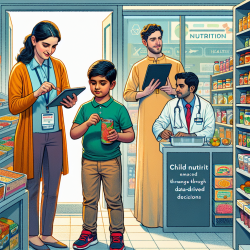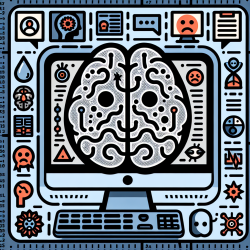As a practitioner dedicated to creating great outcomes for children, staying updated with the latest research is essential. A recent study titled "Musculoskeletal diseases as the basis for issuing disability certificates for children" provides valuable insights that can be applied to improve online therapy services for children with musculoskeletal disorders.
The study, conducted over 16 years, analyzed data from the Municipal Disability Adjudication Council in Lublin, Poland. It revealed that musculoskeletal disorders are the third most common reason for issuing disability certificates to children, following respiratory tract diseases and developmental disorders. This highlights the significant impact of musculoskeletal conditions on children's daily lives and their need for specialized support.
Key Findings
- Between 2006 and 2021, 9,929 disability certificates were issued to children under 16 years old in Lublin, with 1,085 due to musculoskeletal disorders.
- The majority of these certificates were issued to children aged 8-16 years.
- Musculoskeletal disorders accounted for 11% of all disability certificates issued to children in this period.
Implementing Research Outcomes in Online Therapy
Understanding the prevalence and impact of musculoskeletal disorders can guide the development of targeted therapy programs. Here are some actionable steps to enhance your online therapy services:
1. Specialized Training for Therapists
Ensure that your therapists receive specialized training in handling musculoskeletal disorders. This will enable them to provide more effective and tailored interventions for children with these conditions.
2. Incorporate Assistive Technology
Utilize assistive technologies and adaptive equipment to support children with musculoskeletal disorders. This can include speech-generating devices, adaptive keyboards, and other tools that facilitate communication and learning.
3. Develop Customized Therapy Plans
Create individualized therapy plans that address the specific needs of each child. Incorporate exercises and activities that focus on improving mobility, strength, and coordination, alongside traditional speech and language therapy.
4. Collaborate with Multidisciplinary Teams
Work closely with other healthcare professionals, such as pediatricians, occupational therapists, and physical therapists, to provide comprehensive care. This multidisciplinary approach ensures that all aspects of the child's condition are addressed.
5. Encourage Parental Involvement
Engage parents in the therapy process by providing them with resources and training. This empowers them to support their child's progress at home, reinforcing the skills learned during online therapy sessions.
Encouraging Further Research
While this study provides valuable insights, it also underscores the need for further research. Practitioners are encouraged to contribute to ongoing research efforts to better understand the challenges faced by children with musculoskeletal disorders and to develop more effective interventions.
To read the original research paper, please follow this link: Musculoskeletal diseases as the basis for issuing disability certificates for children.










